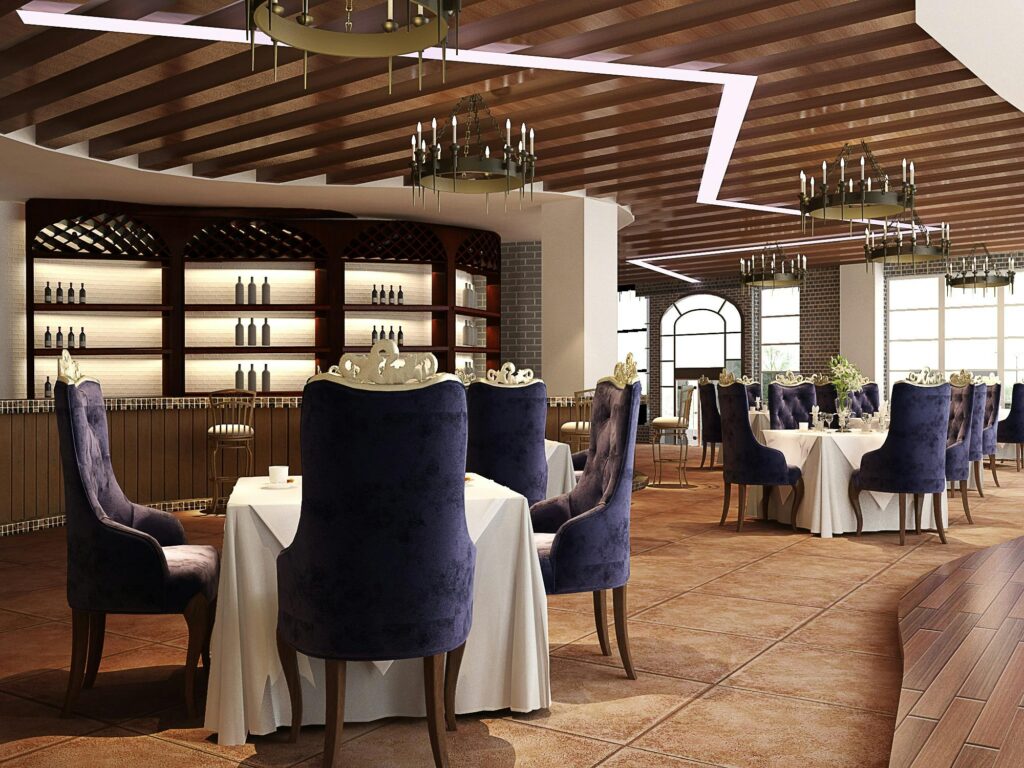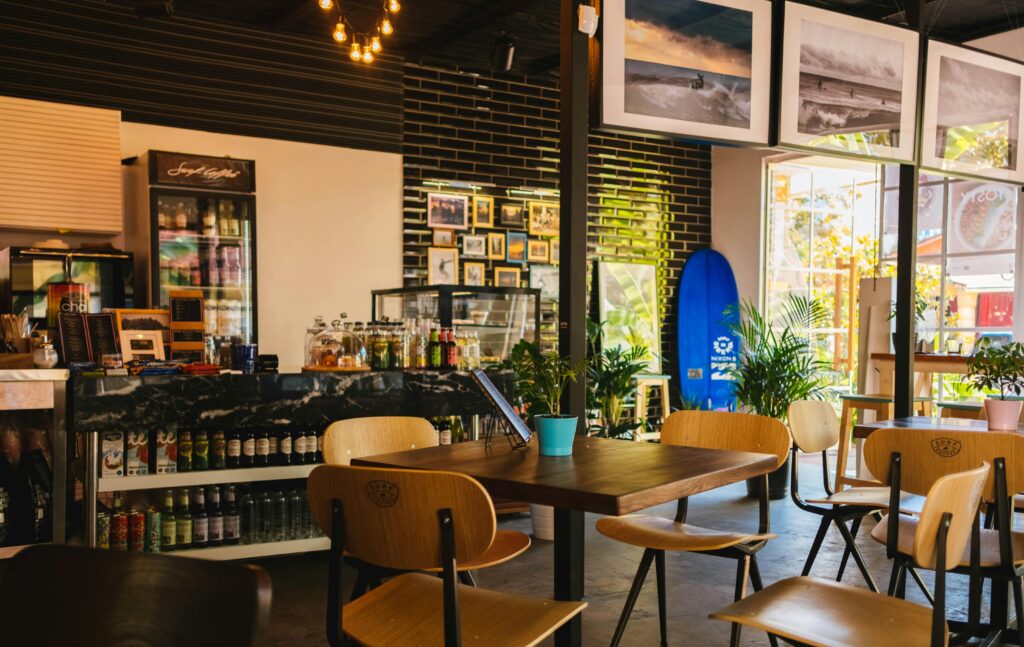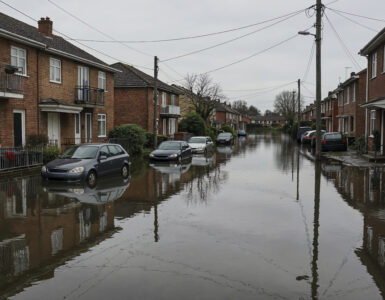Before renewing a restaurant property insurance policy, it’s crucial for business owners to stop and consider a vital question: Does this restaurant property insurance coverage still reflect the current reality of the business?
All too often, restaurant owners renew their policies automatically, overlooking the fact that their operations, risk exposures, or even regulatory requirements may have shifted significantly over the past year.
Businesses Evolve—Your Coverage Should Too
Restaurants are dynamic by nature. Maybe the business added an outdoor dining area, expanded delivery services, or brought on additional staff. Perhaps a second location was opened, new kitchen equipment was purchased, or alcohol service was introduced. Even minor operational changes can significantly impact a restaurant’s risk exposure and insurance requirements.
If the restaurant property insurance coverage hasn’t been updated to reflect these changes, the business could be underinsured at a critical moment. As operations grow and shift, coverage should adapt accordingly to ensure full protection of the restaurant’s assets and continued success.
Laws and Regulations Change
Local and state regulations concerning insurance, employment practices, and liability are constantly changing—particularly in states like Florida, where natural disaster risks and workers’ compensation rules are frequently updated. For restaurant owners, conducting an annual insurance review is essential.
This review offers a timely opportunity to ensure compliance with new legal requirements and evolving industry standards, helping the business avoid fines, lawsuits, or denied claims. It also allows owners to verify that their restaurant property insurance coverage remains aligned with current building codes, safety regulations, and disaster preparedness protocols.
Avoid Costly Gaps and Redundant Coverage
One of the most common issues uncovered during insurance policy reviews is the existence of coverage gaps—areas where a restaurant is unknowingly exposed because its current policy does not address newly emerging or evolving risks. Conversely, some businesses may be overpaying for coverage that no longer aligns with their operations.
Conducting an annual review is crucial for identifying both gaps and redundancies, ensuring that insurance remains efficient, cost-effective, and properly tailored to the restaurant’s current situation. This review should include a thorough evaluation of the restaurant property insurance coverage to confirm it accurately reflects current property values, any recent renovations, and expansions made within the past year.
Prepare for the Unexpected
From hurricanes and fires to employee injuries and cyberattacks, unexpected events can severely disrupt restaurant operations. That’s why a comprehensive annual insurance review is so important—it ensures the business isn’t simply renewing a policy out of routine but is actively preparing for potential disruptions with the right protections in place.
Evaluating the restaurant property insurance coverage ahead of time—before disaster strikes—can make a critical difference in how quickly and efficiently the business recovers. Having the appropriate coverage means reduced downtime, fewer financial setbacks, and a faster return to full operational capacity.
Work With an Expert You Trust
A trusted insurance advisor can guide restaurant owners through their current policy, uncover potential blind spots, and recommend updates or adjustments based on emerging risks and business developments. This process includes ensuring that the restaurant property insurance coverage is sufficient for the business’s present-day operations, property value, and equipment investments.
Much like a routine checkup with a doctor, this proactive approach offers peace of mind—helping prevent costly surprises and ensuring the restaurant is well-protected long before a crisis occurs.
1. Review Business Changes Over the Past Year
Before renewing or adjusting an insurance policy, it’s important for restaurant owners to reflect on how their business has evolved over the past 12 months. Even minor updates can introduce new exposures that may not be covered under the existing insurance structure:
- Has the restaurant expanded its services? Additions such as delivery, curbside pickup, catering, or the launch of a food truck introduce unique liabilities—from employee driving risks to potential damage to customer property. These operational shifts may require adjustments to General Liability or Commercial Auto policies to ensure adequate protection.
- Have the hours of operation changed? Staying open later on weekends or introducing breakfast service can elevate both property and liability exposure. Increased hours often lead to higher foot traffic and accelerated wear and tear on equipment and facilities—factors that should be accurately reflected in the restaurant property insurance coverage to maintain proper risk management
- Has the restaurant hired more employees or changed the roles of existing staff? Expanding the team is a positive indicator of growth, but it may also necessitate adjustments to the Workers Compensation Insurance policy .For instance, promoting a cook to a managerial role or bringing in temporary staff during peak seasons alters the restaurant’s risk profile. Positions that involve more physical labor or carry greater responsibility can directly impact insurance premiums and the level of coverage required. Ensuring these changes are reflected in the policy is crucial for maintaining adequate protection and regulatory compliance.
- Has the restaurant purchased new equipment or implemented new technology? Whether it’s a high-capacity fryer, an upgraded point-of-sale system, or new refrigeration units, these additions represent significant investments.The restaurant property insurance coverage should be reviewed to ensure that these assets are accurately valued and adequately protected against risks such as fire, theft, power outages, or mechanical failure. Keeping coverage up to date helps safeguard the business’s critical infrastructure and minimizes financial loss in the event of an incident.
- Has the restaurant undergone renovations or moved to a new location? Even minor renovations can alter the business’s risk exposure, particularly when they involve changes to plumbing, electrical systems, or the kitchen layout.If the restaurant has relocated or opened a second location, it’s essential that the Business Owners Policy (BOP) reflects these updates. Failing to update the policy could result in coverage gaps, leaving the business vulnerable to unexpected losses. Keeping the policy current ensures comprehensive protection across all locations and operational changes.
- Has the restaurant added a second branch, food truck, or mobile unit? Expanding the business’s footprint is an exciting milestone, but it also demands a thorough review of all existing insurance policies.Mobile units require specialized commercial coverage tailored to their unique risks, while a second brick-and-mortar location must be explicitly included in both the restaurant property insurance coverage and General Liability policies. Without these updates, the business may face critical coverage gaps that could undermine the success of its expansion.
- Evaluate the Current Coverage
It’s essential for restaurant owners to take out their insurance policy and review it line by line. Special attention should be given to the following areas:
✅ General Liability Insurance
- Has customer foot traffic or interaction increased over the past year?
- Are the current coverage limits sufficient to match the restaurant’s expanded business volume?
✅ Workers Compensation Insurance
- Have there been changes in payroll figures?
- Were any independent contractors, seasonal employees, or part-time workers hired?
✅ Business Owners Policy (BOP)
- Does the BOP accurately reflect the true value of the restaurant’s property and current operations?
- Would the current business interruption coverage be adequate to sustain the restaurant in today’s economic environment?
✅ Cyber Liability & EPLI (Employment Practices Liability Insurance)
- Has the restaurant adopted new software systems or started collecting more customer data?
- Have new managers been onboarded or staff responsibilities restructured?

3. Analyze Your Claims History
Your Claims Tell a Story—Make Sure You’re Listening
One of the most frequently overlooked steps in an annual insurance review is analyzing the restaurant’s claims history. This information is more than just a list of past incidents—it serves as a valuable tool for making informed decisions about future risk management and protection.
- How many insurance claims were filed in the last 12 months?
- Were these claims isolated incidents, or do they indicate a recurring pattern?
- Did any claims involve significant costs, preventable accidents, or repeated issues such as water damage, equipment fires, or employee injuries?
Even one or two claims can reveal underlying trends that warrant attention. Identifying these patterns allows the restaurant to adjust its safety protocols, training, and insurance coverage proactively—ultimately reducing future risk and improving insurability.
✅ Adjust Safety Protocols
If the restaurant has experienced repeated property-related claims—such as broken pipes, fire hazards, or storm damage—it may be time to reevaluate safety procedures, routine maintenance, and staff training practices.
For example, a grease fire that results in costly kitchen repairs could indicate the need for more rigorous cleaning protocols or updated equipment. These operational improvements not only help minimize future risks but can also lead to reduced insurance premiums.
Insurance carriers take note when a business proactively manages its exposures, especially when it comes to restaurant property insurance coverage. The condition of the restaurant’s equipment, the frequency of claims, and the nature of previous losses all play a direct role in determining coverage terms and pricing.
✅ Justify Requests for Better Rates
Insurance premiums are heavily influenced by a restaurant’s loss history. If the claims record shows a reduction in frequency or severity—or if the business has remained claim-free—it can strengthen the case for lower premiums or more favorable policy terms.
Providing the insurance provider with documentation of risk-reduction improvements, such as upgraded fire suppression systems or reinforced storm-resistant structures, signals a proactive approach to risk management.
A clean claims record not only reflects responsible operations but may also open the door to negotiating better restaurant property insurance coverage limits, reducing policy exclusions, or qualifying for specialized insurance programs designed for low-risk businesses.
✅ Reevaluate Deductibles and Policy Terms
If the restaurant experienced only minor or low-cost claims—or none at all—opting for a higher deductible might be a smart way to reduce the annual premium. On the other hand, if there was a major property loss that led to significant out-of-pocket expenses, choosing a lower deductible and more comprehensive coverage could offer better financial protection.
This is precisely where a careful review of the restaurant property insurance coverage becomes essential. Does the current policy accurately reflect the value of the restaurant’s physical assets and the potential financial impact of future losses? If not, it may be time to adjust coverage limits and deductibles to strike the right balance between cost-efficiency and adequate protection.
4. Update Property and Asset Inventories
- Has the restaurant acquired new machinery, kitchen equipment, or furnishings?
- Has there been an increase in inventory or an upgrade in technology?
Keeping insurance coverage aligned with these changes is essential. Any additions—such as high-capacity appliances, point-of-sale systems, or bulk inventory—represent a financial investment that must be properly insured to avoid gaps in protection.
📸 Pro Tip: The business should regularly photograph key assets and maintain a digital inventory that includes purchase receipts and relevant documentation. This not only simplifies the claims process but also ensures that the restaurant property insurance coverage accurately reflects the current value of all physical
5. Check Policy Limits and Deductibles
The restaurant may have expanded operations or encountered new financial pressures. In either case, the insurance policy should reflect the current realities of the business.
- Are the existing coverage limits appropriate for the restaurant’s location, size, and industry-specific risks?
- Could modifying the deductible help reduce premiums or better preserve cash flow during unexpected events?
A knowledgeable insurance advisor can assist in fine-tuning this balance, ensuring that the restaurant property insurance coverage provides the right level of protection without straining the budget.
6. Revisit Your Insurance Carrier or Agent Relationship
Is the restaurant receiving the level of guidance and advocacy it truly deserves?
Selecting the right insurance provider goes beyond policy details—it’s about partnering with someone who actively supports the business’s growth and risk management strategy. If the current insurance agent or carrier hasn’t kept up with changes in the operation, it may be time to reassess the relationship.
Key questions to consider:
- Has the agent proactively reached out within the past year?
- Have they flagged regulatory updates, recommended policy adjustments, or shared cost-saving strategies?
- Do they demonstrate a clear understanding of the restaurant industry—particularly in Florida, where hurricane risks, fire hazards, and equipment failures are major concerns?
- Are they responsive and transparent when questions arise or support is needed?

- Compare Quotes—But Do It Smart
IWhile choosing the lowest premium may seem like the obvious move, smart restaurant owners know that price is only part of the equation. A comprehensive quote comparison should go beyond the numbers to uncover what each policy truly offers.
- Side-by-side coverage comparisons – Ensure the quotes include equivalent coverage limits, deductibles, and terms—especially when it comes to your restaurant property insurance coverage.
- Review of exclusions and limitations – Low premiums often come with fine print that can leave a restaurant vulnerable when it matters most.
- Carrier reputation and customer service – The reliability of the insurer during claims and their responsiveness to issues should factor heavily into the final decision.
8. Ask About Discounts or Bundling Opportunities
Many restaurant owners are unaware that their restaurant property insurance coverage—along with other essential policies—may qualify for substantial savings, provided they know where to look and what to ask for.
If the business has been with the same insurer for over a year or has implemented improved safety protocols, it may be eligible for discounts that could reduce annual premiums by thousands of dollars. Bundling key policies—such as General Liability, Workers Compensation, and a Business Owners Policy (BOP)—can also streamline insurance management and lead to more competitive rates.
Loyalty Discounts
Some insurers offer rewards to long-term clients who maintain continuous coverage and demonstrate a strong claims history. When a restaurant has been insured through the same provider for several years—especially with few or no claims—it may qualify for discounted rates on its restaurant property insurance coverage or other bundled policies.
Policy Bundling
Bundling remains one of the most straightforward and effective strategies for reducing insurance expenses. When a restaurant combines its General Liability, Workers Compensation, and restaurant property insurance coverage into a single Business Owners Policy (BOP), it often benefits from lower premiums and the convenience of streamlined policy management.
Beyond cost savings, bundling enhances the coordination between coverages—an advantage that becomes crucial during disasters or operational disruptions. A well-structured BOP ensures that no essential areas are overlooked and that claims are handled more efficiently when multiple types of coverage come into play
Claims-Free Incentives
Restaurants that have maintained a clean claims history—going a year or more without filing—should highlight this during their annual review. A strong track record of risk-conscious management signals to insurers that the business is lower-risk, which can translate into substantial premium reductions.
This is especially beneficial for restaurant property insurance coverage, where high-value assets such as kitchen equipment, POS systems, and structural improvements are involved. Insurers are often more willing to offer favorable terms or discounts to policyholders who demonstrate proactive risk mitigation and a history of responsible operations.
Safety Training Credits
Restaurants that have recently implemented staff training programs—such as fire prevention, food handling safety, or slip-and-fall awareness—may qualify for credits on their restaurant property insurance coverage. Insurance carriers often reward documented safety efforts with premium discounts.
Additional improvements like upgraded alarm systems, automatic fire suppression units, or reinforced structures for hurricane resistance can further reduce insurance costs. These proactive measures not only lower the risk of incidents but also signal to insurers that the business is committed to maintaining a safe, compliant, and resilient operation.

Discounts Aren’t Always Advertised—You Have to Ask
Most insurance carriers don’t automatically apply every discount a restaurant may qualify for. That’s why partnering with a knowledgeable, independent insurance advisor like CIS can make a significant difference. A trusted advisor knows how to uncover hidden savings opportunities and align restaurant property insurance coverage with the business’s unique risk profile and operational strengths.
The objective isn’t merely to cut costs—it’s to ensure that every premium dollar contributes to meaningful protection. With strategic bundling and a proactive approach to discount eligibility, restaurant owners can lower expenses while maintaining comprehensive, high-quality coverage..
10. Prepare Questions for Your Insurance Agent
It’s essential that restaurant owners make their annual renewal conversations with their insurance agents as productive as possible. Being prepared with the right questions can lead to valuable insights and potential savings. Here are some smart questions they should consider asking:
- Have there been any recent changes in Florida insurance regulations that could impact the restaurant’s policies or requirements?
- Are there any coverages currently in place that are no longer necessary or could be reduced without increasing risk?
- Is it possible to enhance the restaurant property insurance coverage or other policies without significantly raising the overall premium?
Make Your Renewal Work for You
An insurance policy shouldn’t be treated as just another administrative task—it’s a vital part of a restaurant’s operational foundation. Like finances, staffing, or day-to-day management, insurance deserves thoughtful review and strategic planning.
Restaurant owners should approach their annual renewal as a chance to improve, not just maintain. It’s the ideal time to ask the hard questions, reassess recent business changes, and partner with someone who understands the full scope of their operation.
📞 Need expert guidance during renewal season?
Commercialize insurance service works with business owners to protect what they’ve built—offering better quotes, smarter insurance coverage, and deep industry-specific insights. Whether managing a restaurant, a retail store, or a service-based company, CIS ensures their insurance evolves with their business.
Ready to Get Covered?
Business owners looking to protect their restaurant operations can stay informed and empowered by connecting with Commercial Insurance Services (CIS) on social media or reaching out directly for a free, no-obligation quote tailored to their specific needs. Peace of mind begins with the right coverage—designed to match the risks and realities of the food service industry.
To learn more, visit https://usa-cis.com/ or contact one of their knowledgeable agents today:
Phone: (321) 830-0006
Email: info@usa-cis.com
Web: https://usa-cis.com
Facebook: Commercialize Insurance Services







